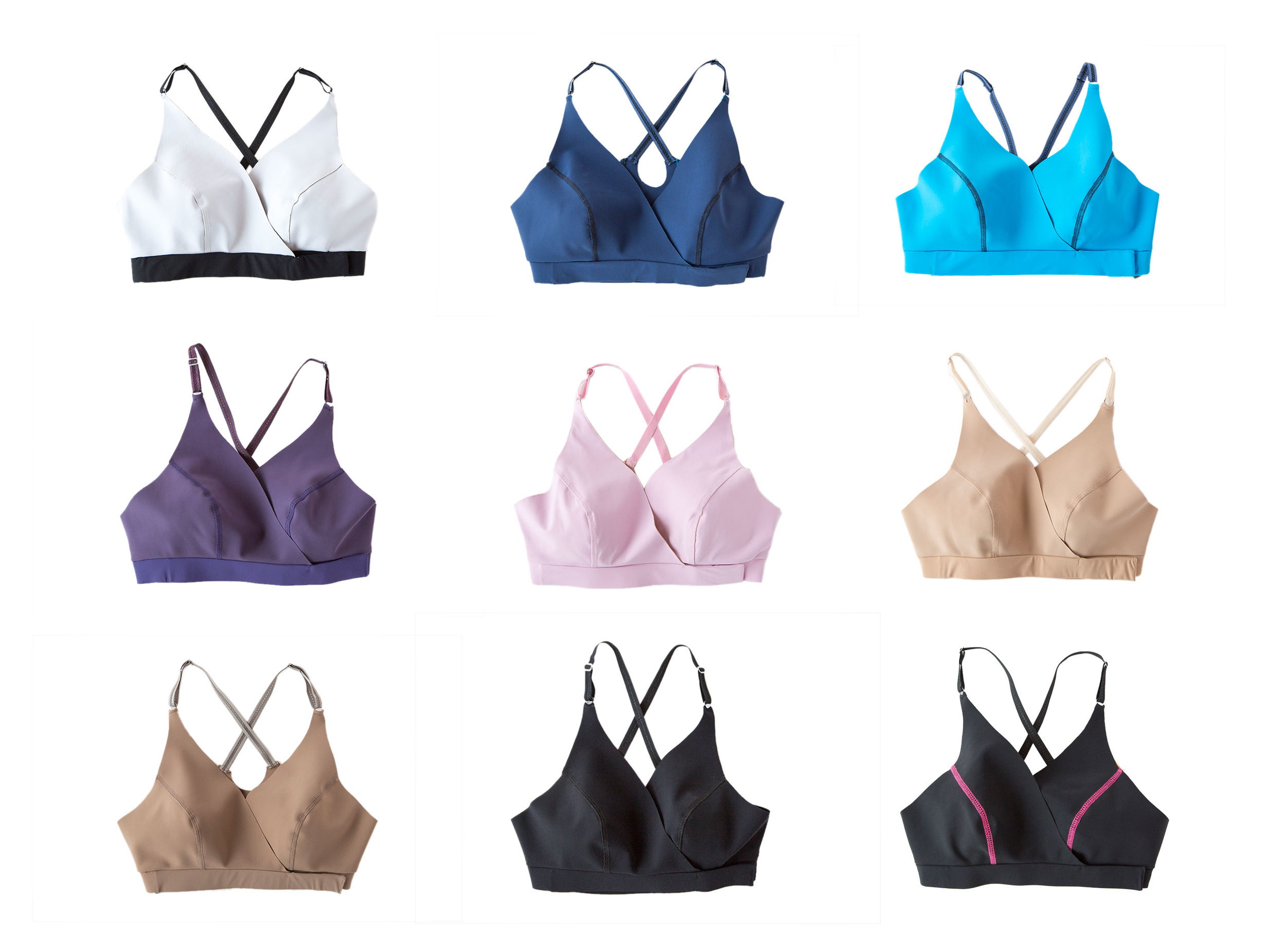The Right Fit: Compression Undergarments or Shapewear
Jean Criss
What type of surgical garment provides the right fit? A compression undergarment or shapewear? No matter what type of post-op procedure including breast lift, mastectomy, laparoscopy, liposuction, abdominoplasty, bariatric, c-section, hysterectomy or similar surgery, you may wonder what is the proper compression garment post-surgically to wear? Do hospitals and physicians provide you the best garment for your specific needs? Can the wrong garment cause health issues or post-surgical problems? What are the benefits? Let’s explore.
After numerous post-surgical procedures myself and complications from breast reconstructive surgeries and others, I decided to blog about the differences offering the right fit wearing various post-surgical undergarments. As a patient, there is much we need to learn before undergoing a medical procedure let alone to second guess the proper type of undergarment to wear. Here are some useful tips to discuss with your surgeon before you leave the OR or you head to the retail store pre-op.
1. A compression garment is a foundation garment you wear under your clothing like a bra or underwear.
2. The difference between compression garments and regular undergarments is that compression garments are more like the shapewear you might use to reduce swelling, eliminate fluid post-op or smooth out the appearance of body fat underneath your clothing.
3. The major difference is compression garments aren’t for hiding flaws. They’re important medical-grade garments designed to help the body heal from post-op surgical procedures.
4. When you undergo a procedures such as a laparoscopy, abdominoplasty, gastro-bypass, c-section, hysterectomy, liposuction, mastectomy, breast reconstruction, augmentation or lift, your compression garment will greatly aid in the healing of your body.
5. Immediately following your procedure, your compression garment helps by applying pressure to the affected area, reducing swelling and helping your body drain excess fluids.
BEFORE - A traditional post-surgical bra hospitals carry and patients dislike for many reasons - front zipper and band rub against breast incisions after surgery. Not attractive under clothing. Velcro snags other apparel.
TODAY - CRISSCROSS Intimates post-surgical bras were designed to provide revolutionary design, using emerging textiles, magnets and low-profile Velcro for front criss-cross wrap closure and offer chic, colorful compression, double-bonded, micro-fiber, breathable fabrics which also hold medical drains. Learn more here https://crisscrossintimates.com/bras/nina-bra. Made for survivors by a survivor for any stage or phase of post-op breast surgery.
Revolutionary designs offering compression and style.
BEFORE - Men’s post-surgical garment that provides compression - not comfortable or attractive under apparel.
TODAY - Men’s CRISSCROSS Intimates Vests offer high compression micro-fiber fabric, clean edges, hold medical drains with soft low-profile Velcro front closure. Learn more here https://crisscrossintimates.com/mens
The CRISSCROSS Joe Vest offers a discrete way to wear a post-surgical undergarment whether at work, out or home.
6. For mastectomy, breast reconstruction, augmentations and lifts, compression garments are recommended. Many patients may be required to wear a compression bra around the clock for the first few weeks following their procedure. This will help keep swelling down and hold implants in place. Depending on the procedure and individual patient, compression bras may be required for longer periods, until a regular non-underwire bra is safe. It is often recommended that patients avoid underwire bras immediately following surgery, as these bras can irritate the skin and nerves underneath the breast during the healing process. Some women, like myself, who have endured bilateral mastectomy and multiple surgeries never return to a wire bra.
7. Patients undergoing breast augmentation may also be required to wear a device called a compression strap. A compression strap is a garment used to help hold breast implants into a natural position. Usually, augmentation patients wear compression straps for up to 6 weeks, but this may vary by individual patient.
8. For abdominal procedures, the body will likely still be full of excess lidocaine and tumescent fluid, which is used to help separate the body fat from the abdominal wall and to reduce bleeding. Wearing compression garments following abdominal liposuction or gastro-bypass surgery helps your body not only heal in a desirable shape, but it helps this excess fluid drain upward and out of your body.
A C-Section post-recovery garment showing compression throughout abdomen area.
9. Exploratory laparoscopy, c-section and hysterectomy may require compression undergarments depending upon the individual patient as with liposuction and abdominoplasty, or "tummy tuck," procedures. Compression garments can aid in preventing a dangerous accumulation of fluids in the body called a seroma. Seromas are a post-op risk and often require additional emergency procedures such as needle aspiration and/or surgeries and can cause additional internal and external scarring.
10. Compression garments serve many purposes. They can help reduce blood clots and keep your skin, including your incision, from moving during sleep or when you are walking around. While they may not be the most comfortable thing to wear following surgery, they really do make a dramatic difference in your healing and overall results. If you are prescribed a compression garment following your procedure, please wear it exactly as instructed and don’t think your surgeon won’t find out if you don’t wear it.
11. Compression garments are firm, strong or tight in strength. Oftentimes, you may find the percentage of Spandex or Lycra® to be greater than the Nylon to offer additional compression depending upon the fabric. They should “give” or stretch in both directions and are most comfortable next to the skin with double-bonded compression micro-fiber fibers offering silky smooth fabrics. Shapewear is often silky and comfortable but may not provide the compression and help with edema - it all depends on the brand.
12. Look for garments with minimal trims or accessories such as zippers, snaps, hooks and eyes which may rub at the incision sites and seek those that are padded with soft low-profile Velcro® or soft fabric to eliminate friction at your skin. A combination of these fibers and fabric weights provide the ultimate strength, comfort and compression to aid in the healing process.
This shows soft compression fabric under trims providing padding at closure.
The Crisscross Men’s Arrow Vest offers low-profile Velcro with no other trims to ensure comfortable fit at front-closure.
13. Note that you may need to search for garments by style with different names rather than by the traditional procedure you had. For example, a c-section or belly garment may be best suited with a binders rather than a long-line compression undergarment. It all depends on body type and surgical procedures. Binders in particular may ride-up if not positioned tightly and properly on the body. If worn too tightly, they cause contusion, as in my case. It is also difficult to sit and lie down if they don’t fit properly - so the proper style and right fit is utmost importance. Make sure your physician takes the time to “FIT” you for your proper procedure. Binders are also worn for transgender procedures.
This binder offers the “right fit” for abdominal surgeries and proper placement. Wear tightly secured for best compression, est. 8-10” length.
This binder is tricky where positioned as it may “ride-up” when you walk, sit or lie down providing potential complications.
This binder offers low-profile Velcro at closure - always a nice soft feature with room for adjustments when swelling depletes. Make sure your binder covers all areas where compression is needed. Binder should measure from band to groin over 12” length.
This looks nice but may not offer good compression. Looks soft with low-profile Velcro but may not offer much compression. Best to use after drains are removed and inflammation is less.
This looks like a bandeau for the waistline. Soft and stretchy but not a compression garment. Make sure compression garments offer a tight secure fit.
14. A garment with a zipper front at the abdomen may be better suited than one that adjusts on the sides if you have “JP’s” or Jackson-Pratt drainage tubes to contend with. However, a mastectomy Bra that offers convenient way to hold the drains at your side may offer the best comfort as with or Crisscross brand. The fabric, style and fit makes the world of difference when it comes to the right fit with compression undergarments. They should be able to hold your drain or offer a way to conveniently position them.
15. If you have medical drains (JP’s or Jackson Pratt drains), keep track of your daily loss of fluid depletion to ensure they can be tracked and removed in a timely manner by your physician.
This ideal garment slips your JP drain thru at abdominal area and holds securely. Something I could have used most recently.
An alternative garment for lower abdomen typically used for laparoscopy surgery.
I was recently sent home from the hospital in a tight piece of elastic, in an inappropriate tight binder, most commonly used for gastro bypass, which caused a seroma and contusion across my groin with internal injuries, among other medical complications. In lieu, a firm compression undergarment would have done the trick, day one, to reduce swelling in the appropriate areas where my procedure was performed.
16. If you don’t wear the proper compression as prescribed, it can prolong healing and other complications may occur. To achieve the best possible results post-surgically, it’s important to follow your surgeon’s instructions before and after the procedure and follow your physician’s advice for your best health and wellness recovery.
To learn more about Crisscross Intimates luxurious compression bras, active wear bras, other undergarments, men’s vests and shapewear, please preview our colorful, contemporary collection at https://CrisscrossIntimates.com or contact us at 908/247-8443. You can take a look here https://CrisscrossIntimates.com/LookBook. My next blog will discuss complications resulting from wearing the wrong post-surgical undergarments.
I wish you all the breast! Jean
















